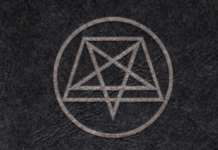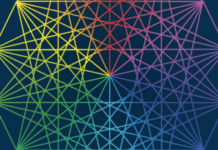Modern Satanism is probably the widest-spread of the Satanic denominations, and also the biggest “bone of contention” amongst the others. Modernists do not worship Satan as a god or deity; theistically, they are atheists. They believe in neither a god nor a devil, nor spirits and “supernatural beings.” Needless to say, it is usually not the Modernists who appear on Jerry Springer or get featured in the headlines of the local newspapers. The main “argument” over the Modernists is that, if they are in truth atheistic, why even bother using the name “Satan?” Why not just call yourself atheists or humanists or secular humanists, et al., instead of dragging in the name of a Christian boogeyman? Obviously I can’t answer this for them, but the section “Why Satan?” on the “Foundations” page may shed some light on the various reasons which exist.
There are, as I see it, primarily three ‘flavours’ of Modern Satanism: Naturalist, Psychologic, and Symbolic. They are not necessarily mutually exclusive:
Naturalist
The Naturalists view Satan as the natural force of the universe, the “underlying current” of nature. The power which makes trees grow, earthquakes shatter, stars form and die….all these, the raw energy of “What Is,” is Satan. As such it has no good or bad side in and of itself; it is everything. But, it is not intelligent or self-aware. Just like electricity or wind power, it exists without consciousness, but may be tapped by the conscious user (magician). This is the basis of Modern Satanic magick: that by training oneself to “tap into” this force — Satan — one may subtly warp reality into a form more advantageous to ones desires. However, it is not an external godhead or force which enables you to accomplish this; it is the force of your own willpower and emotions, exerting a “draw” on the Satan, attracting it to you so that you can “mold” it into a more suitable shape.
Psychologic
The “Psychologic” viewpoint centres around Satan as being the primordial side of the human psyche which the majority of humanity seeks to control and eliminate, instead of accepting and utilizing. The Freudian id, the Jungian shadow, the “animal within” — these are perhaps the best parallels to the ‘Satanic self’ which the Psychological view of Modern Satanism desires to seek out and liberate.
There is a great tendency by non-Satanists to reflect on this particular viewpoint and come to a conclusion that developing one’s ‘Satanic self’ is tantamount to reverting to childhood — akin to an infant’s “gimme gimme gimme mine mine mine” outlook on life. While some may think this, it is my personal belief — and the belief of most Satanists I have met — that truly coming to terms with one’s inner self, coming to terms with both the proper ‘civilized’ part and the unruly ‘animal’ part, is infinitely harder than shoving a piece of yourself in a closet and pretending that it does not exist.
Symbolist
The Symbolists view Satan as a mental/mythic archetype, as the “Adversary” or the “Light-bringer.” As such, the figure of Satan as an anthropomorphic being is completely fictional: he does not exist as such. However, the mental conception of the figure draws us to him. We identify with him, respect him, admire him, even as a fictional character. The archetype or mythic figure embodies a lot of what Symbolists consider important and good qualities. Some of them may include pride, independence, free-will, intelligence, knowledge, truthfulness, and ambition. The exact list will vary on who you ask. The qualities of the archetype may be draw from various sources, such as the Christian Bible, Milton’s Paradise Lost, the Apocrypha, The Satanic Bible, and personal experience or thought. For some, the admirable qualities may include destruction, cruelty, hatred — it truly depends on what the individual Satanist sees as “desirable” and “undesirable,” or as “admirable” and “inadmirable.” Again, he Symbolists do not worship Satan-Lucifer, or acknowledge his literal existence, but view him as a mythic figure much like Peter Pan, Uncle Sam, Zeus, or King Midas.
Finally, no discussion of Modern Satanism would be complete without discussing the LaVeyan Satanists (Church of Satan).
LaVeyan Satanism was founded in the 1960s by Anton Szandor LaVey. It is without a doubt the most well-known of the Satanic denominations, and is the only one (as far as I am aware) with federally recognized religious status. Officially, it is known as the Church of Satan, and is head quartered in San Francisco. Anton LaVey passed away in late October of 1997, at which time leadership of the Church passed into the hands of Blanche Barton (a long-time associate of LaVey). Although at one time Karla LaVey (LaVey’s daughter) was participating as a “co-High-Priestess,” she has since split from the Church of Satan over ideological differences. She is now the acting High Priestess of the First Satanic Church (founded Oct 31st, 1999), which claims to be a “resurgence of Satanic ideals” closer to the spirit of her father’s original teachings.
Although it is true that Satanism existed before him, LaVey can be said to be (with relative authority) the “father” of Modern Satanism. Before LaVey went public with his new Church, and with his many works on Satanic philosophy (The Satanic Bible, The Satanic Rituals, The Devil’s Notebook), Satanism was an underground, disorganized, and chaotic religion. Since the formation of the Church of Satan, information has become much more readily available and people had, for the first time, a sense of Satanic identity and organization.
The core philosophy of the Church of Satan is that of indulgence; of living one’s life to the utmost of intellectual and material/carnal fulfilment. This includes fulfilling all of one’s desires, so long as it does not involve the unwilling (children and animals are classed as unwilling). If fulfilment of these desires comes from illegal actions, so be it — but the Satanist must be prepared to pay for any actions which he or she performs (the doctrine of personal responsibility).
Lastly, we come to the point of semantics. LaVeyan Satanists generally contend that they are the “real” Satanists, and that without LaVey none of Modern Satanism would be possible, as it was LaVey who “opened up the doors” to Satanism in the 1960s. Satan-worshippers or Devil-worshippers, they tend to regard as foolish and trapped in Christian behavioural patterns (turning to a god or otherworldly force). Similarly, Traditionalists (those who worship Satan as a spiritual or divine being), tend to call the LaVeyans “pseudo-Satanists” or pretenders, claiming that they are just atheists who use the name “Satanist” for shock value and capitalistic gain.
Groups:
- The Official Church of Satan Website
- The First Satanic Church








